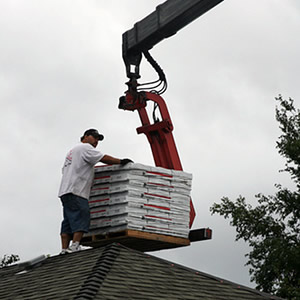
On February 17, 2009, President Barack Obama signed the American Recovery and Reinvestment Act (ARRA) of 2009. All told, the bill calls for the spending of $787 billion dollars over the next number of years on the expansion of unemployment benefits and other social welfare programs, and domestic spending on health care, education, and infrastructure, which includes the entire energy sector.
The bill sets aside $5 billion for the weatherizing of modest-income homes, but you have to know how to get that money. A lot of that money will be distributed as Tax Credits on the installation of new, more energy-efficient products that will help wean the United States off of its dependence on fossil fuels. Listed below are the details on Home Improvement.
The ARRA allots $4.3 billion for improving the energy efficiency of homes in 2009 and 2010. Homeowners can recoup up to 30% of the cost of one specific project up to $1,500, which also includes installation costs for heating and cooling equipment. The ARRA triples the amount available for a tax credit from $500 to $1,500. It also removes the cap on geothermal heat pumps and solar energy through 2016.
To be eligible the tax credit for improving energy-efficiency of a home, you have to be purchasing and installing products at very specific standards. There are two standards for which home improvements can qualify for the tax credit. The first is for items placed in service (installed and running) between January 1, 2009 and February 17, 2009. The terms of the tax credit are less clear for this time period, however the Internal Revenue Service will likely clarify these terms in guidance documents, which are expected to be released later this year.
The second standard, which is documented below, applies to products placed in service between February 18, 2009 and December 31, 2010. Listed below are the specifics for each exterior improvement, and while they share similarities, each product demands different levels of efficiency.
Exterior Windows (Including Skylights)
The new window or skylight must meet the requirements for your region of the 2001 or 2004 International Energy Conservation Code (IECC), a model energy code for buildings. It must also have a U-factor below .30 and Solar Heat Gain Coefficient (SHGC) of .30. Only some Energy Star® windows apply, so be sure to make sure of the U-factor and SHGC before purchase.
Storm Windows
Installed Storm Windows must meet IECC in combination with the exterior window over which it is installed, for the applicable climate zone. The Manufacturer’s Certification Statement will list the classes of exterior windows (i.e. single pane, clear glass, double pane, low-E coating, etc.) that a product may be combined with to be eligible.
This is a signed statement from the manufacturer that certifies the product or component qualifies for the tax credit. Taxpayers must keep a copy of the certification statement for their records, but do not have to submit a copy with their tax return.
Exterior Doors
Exterior Doors must have a U-factor of .30 or below and an SHGC of .30 or below. As always, it is important to check with manufacturers before purchase.
Storm Doors
In combination with a wooden door assigned a default U-factor by the IECC, and does not exceed the default U-factor requirement assigned to such combinations by the IECC. For a storm door to qualify for a tax credit, it has to be durable and expected to last 5 years, or comes with a two-year warrantee.
Roofing – Metal and Asphalt
The roof you are installing must be Energy Star® qualified. All Energy Star® labeled metal and asphalt roofs qualify for the credit. That being said, the roof must still be expected to last 5 years, or have a two-year warrantee.
Insulation
For insulation to qualify for a tax credit, it must meet the 2009 ICEE and its Amendments. The primary purpose of your insulation must be to insulate, for instance vapor retarders are covered, but siding does not count. The required insulation level will vary by region and will account for insulation that is already included in your home.
GREENandSAVE.com is a free resource for anyone that wants to save energy, money, and the environment. The articles, product reviews, online tools, and return on investment calculations are researched from a diverse range of public and private sector sources. Overall, the company is passionate about saving money as well as creating healthy homes, offices, and lifestyles.
For ways to improve your home without Government Assistance, take a look at GREENandSAVE.com for your next Green Home Remodeling project. Or, for more information on one major project that can save you money on utility bills, take a look at the GREENandSAVE article on Windows.

